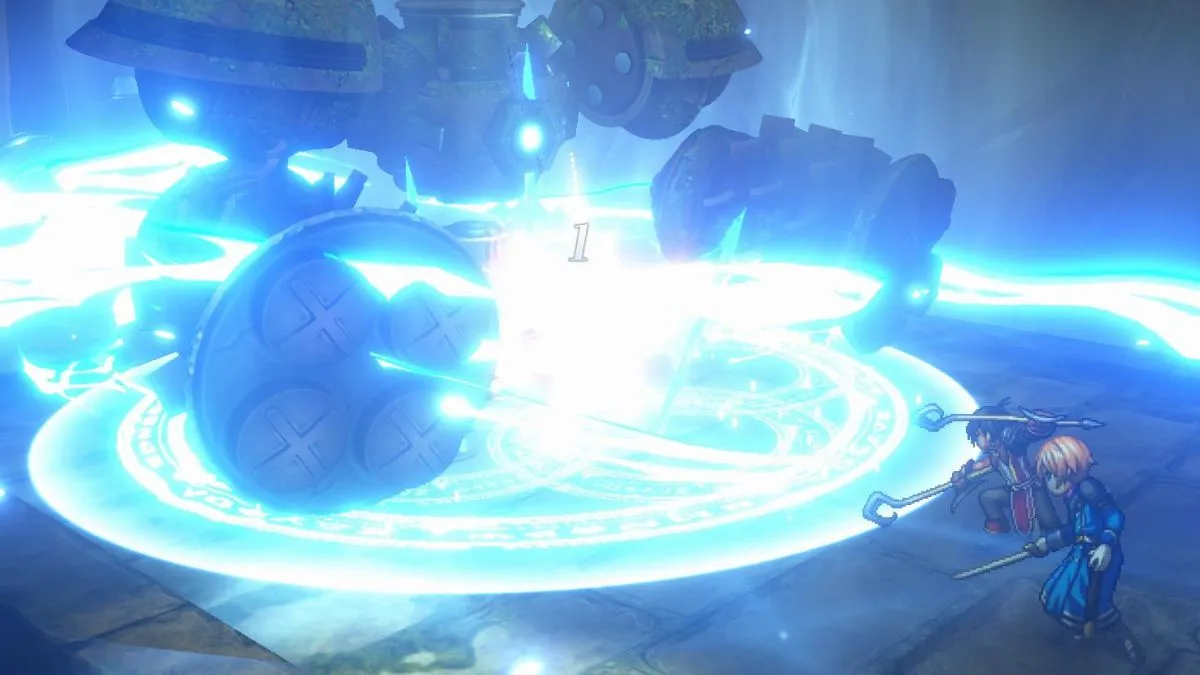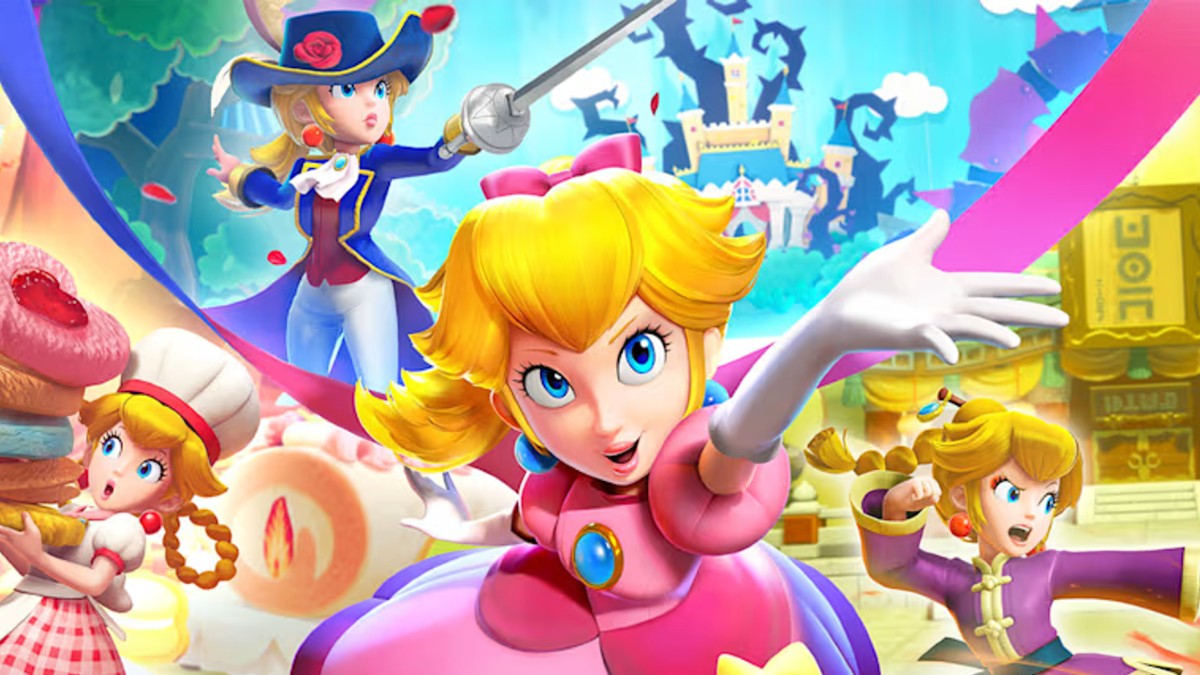Developed and published by Toby Fox. Released September 15th, 2015. Available on PC and Mac.
JRPGs are often been criticized for lacking innovation. The basic formula of “spike-haired protagonist kills stuff and watches numbers go up until he saves the world” hasn’t really changed since the days of Chrono Trigger on the SNES, and attempts to revitalize the genre with bombastic graphics and complicated gameplay systems have largely come off as gimmicky and uninspired (see Lightning Returns: Final Fantasy XIII). This has caused many to believe that the JRPG is “dead,” but Undertale, the ingenious indie project from creator Toby Fox, proves that we don’t need incredible graphics and gimmicky systems to keep the JRPG genre alive. We just need to use the systems we have in new and interesting ways… even if the people doing so aren’t necessarily from Japan.

When describing Undertale, many people make the somewhat unavoidable comparison to Earthbound. Undertale is also a 16-bit game done in JRPG style, with minimalistic graphics and a quirky sense of humor. Undertale looks low-budget, and that’s because it is. The project started as a meager Kickstarter asking for $5,000, and ending at $50,000. It was entirely made in Game Maker, an engine usually used to create half-finished fan-games rather than a game that, for a brief time, would top Metacritic’s PC charts. But the same strengths that made Earthbound a timeless classic are the strengths that make Undertale a joy to play in 2015, which is to say the writing, design, and overall presentation are so on point, simple graphics don’t take away from the gameplay experience.

But before I get carried away in singing Undertale‘s praises, let me give you a short rundown on what the game is about. A long time ago, monsters and humans fought a brutal war. The humans eventually won and locked the monsters underground behind a magical barrier. You play the role of a human child, who accidentally falls through the barrier and finds themselves trapped in the world of monsters. It’s up to you to guide this child home through the perils and puzzle of this subterranean world.
Undertale‘s gameplay is a simple remix on the standard JRPG formula. In battle you can choose to fight, run away, check the enemy’s stats, and so forth. Fighting will initiate a small timing mini-game (much like, say, the Paper Mario series) which will allow you to increase your damage. Defending on the opponent’s turn involves moving a representation of your character around enemy attacks, bullet-hell style, which is not only innovative but enjoyable. Despite this small change, most of the basic trappings of the JRPG can found here. New weapons increase attack. New armor increases defense. Buy healing items to keep yourself alive and don’t fall to 0 HP.
If that sounds like every JRPG you have ever played before, that’s because it’s supposed to, because Undertale isn’t just a JRPG, it’s a commentary on JRPGs. It likes to put you face to face with your tendencies as a gamer and ask “why?” “Why do you do this?” “Why does any of this make sense?” For example, most stores in the game will actually refuse to allow you to sell your old equipment to them. Why would they? They have better stock to begin with. The scenes that play out when you ask a shopkeeper to buy your junk are hilarious and if you actually manage to find someone to sell to, let’s just say you are in for a treat.

Another example is the game’s morality system. Normally, morality systems boil down to making a few key choices that either paint you as good or evil, and since these choices tend to be telegraphed it’s easy to play the character you want to be. But Undertale doesn’t judge you by the character you want to be, it judges you for who you are.
You see, you can get through Undertale without ever actually killing anyone. You can run away from nearly every battle, and those that you can’t run away from allow you to trick, reason with, or otherwise pacify the enemy through non-violent means. Even bosses can be dealt with in a non-violent manner. Playing the peacekeeper doesn’t give you any EXP and gives you little money, if any at all. This means you can theoretically beat the game at level 1 without ever having to attack a single person, something that franchises like Deus Ex have tried and failed to do in the past.
But why bother if killing enemies will increase your stats? Why not just charge in blades-a-swingin?
This, is where the morality system comes in. You see, the game characterizes random enemy encounters not as mindless beasts, but as people who have hopes, dreams, and families, just like you. Killing them is at best manslaughter in self-defense and at worst flat out murder. Yes, it is easier to simply kill your opponents than to reason with them, but that’s because the game is making a statement. Violence IS easy! Hurting people is easy. Caring about people, even if it means you have to sacrifice for them, is what’s difficult.
That’s the dilemma that Undertale puts on your shoulders from the second you start the game. Will you spare your opponents despite the burden it puts on you, or will you slaughter them out of anger, frustration, apathy, or masochism? Who have you killed? Who have you hurt? Why? This is what Undertale judges you on, not on dialogue choices but on the actual way you play the game, and the story changes accordingly, allowing you to play a range of characters from conflicted stranger, to kind-hearted child, to deranged psychopath slowly losing their grips on reality.
And man, what a story the game has to tell! It seems simple on the surface but the plot cuts deeper as you get further into the game. It tells a story of love and loss, of friendship and hatred, of will and determination. All of this sounds really fuzzy and vague – but believe me, if I spoiled any part of Undertale for you I would be doing you a great disservice. This is a game that is designed to be experienced raw and unfiltered.
The characters in Undertale are easily its biggest strength. These characters aren’t simple rote RPG response machines. They feel alive. They feel like your friends, family, and greatest enemies. You grow to care about them, and similarly care about how your actions impact their lives. This is partially because of the painful positions the game puts you in, like asking you whether or not you’d want your friends to be happy without you, or miserable with you. Once again, this isn’t a dialogue choice. This choice is made through your actions, and that’s what makes it scary and heartwrenching.
It’s also worth noting that nothing in Undertale is game design fiat. Saving and loading aren’t just mechanics they are story elements. Restarting your game isn’t just futzing with the save system, it’s futzing with time, and certain characters will remember what you did in previous. Undertale always remembers, and there is no way to ever have a 100% clean slate short of completely uninstalling the game AND screwing around with Steam’s file synch servers.
So much else plays a central role in the plot. The feeling you get when you see your level increase? That’s a part of the plot. Your friends accidentally spoiling the game for you? That’s a part of the plot. The deep desire you have to see all the content the game has to offer? That’s a part of the plot. Heck, it could even be argued that watching let’s plays and reading reviews of Undertale are also part of the plot. I’m playing Undertale right now by reviewing it! No other game has done that. Once you start Undertale, you literally can’t stop it. Even the choice to no longer play the game, is a part of the game. It creeps into your real life whether you like it or not.
Undertale is a magnificent experience that I wouldn’t hesitate to call one of my favorite, if not my absolute favorite, RPG of all time. But more than that, it’s an important game to play because it makes you think about your relationship with videogames, your own morality, and the world around you. None of this was accomplished with next gen technology. None of this was accomplished by changing the JRPG formula drastically. None of this was accomplished by bombarding us with 4K HD graphics. It was all accomplished by one designer thinking deeply about how we interact with the games we play. At 10 dollars on Steam it would be a crime not to experience Undertale for yourself. If this isn’t RPG innovation I don’t know what is.
Bottom Line: Undertale is fantastic in ways that are hard to describe. It’s a love letter to RPGs, gamers, and gaming in general.
Recommendation: Anyone who grew up with 16 bit RPGs will love it. Fans of games like The Stanley Parable that extend their narrative outside the game world will also love it. If you are the type of fan that loves to delve into the facts and minutia of a game universe, Undertale will leave you obsessed for months.
[rating=5]


